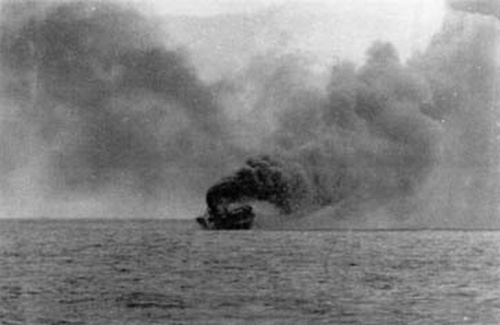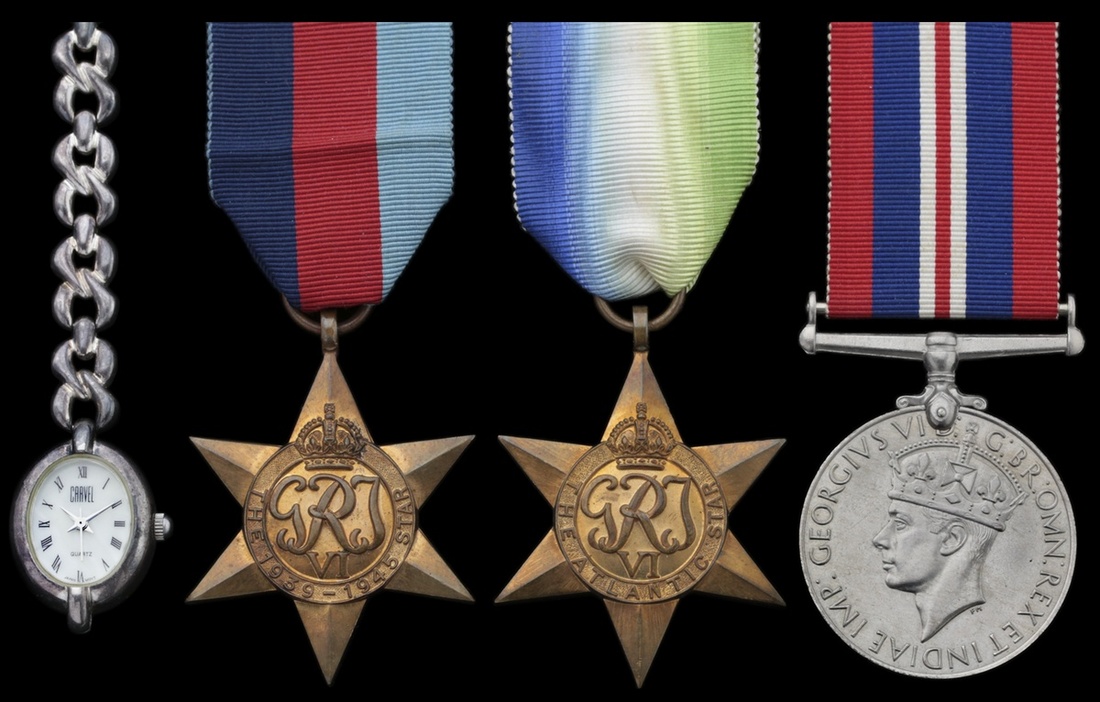Auction: 22003 - Orders, Decorations and Medals
Lot: 312
Three: Stoker W. K. Cock, Royal Navy, who was killed in action when the aircraft carrier Glorious was sunk in the Norwegian Sea by the Scharnhorst and Gneisenau, during Operation Alphabet - the evacuation of Norway, 8 June 1940
1939-45 Star; Atlantic Star; War Medal 1939-45, with named Admiralty enclosure in the name of 'William Kenneth Cock', in card box of issue, addressed to 'Mrs A Cock, 5 Dutton Terrace, Launcerton, Cornwall, nearly extremely fine (3)
William Kenneth Cock was born in 1919 and served during the Second World War as a Stoker in the aircraft carrier Glorious, and was killed in action during Operation Alphabet on 8 June 1940.
On 31 May 1940 she sailed from the Clyde to the Norwegian coast to carry out air operations in support of the evacuation of allied forces from Norway in Operation Alphabet. On 8 June she returned to Scapa Flow, escorted by the destroyers Ardent and Acasta. On the way through the Norwegian Sea the funnel smoke from Glorious and her two escorting destroyers was spotted by the German battleships Scharnhorst and Gneisenau at about 1545hrs. The German ships were not spotted until shortly after 1600hrs, when Ardent was dispatched to investigate. They laid a protective smokescreen to hide the British ships, and engaged the Germans with their 4.7 inch main armament, which proved to be ineffective.
Despite coming under heavy fire from the much larger guns of the Germans, Ardent carried out a torpedo attack. She managed to score a single hit, but was struck repeatedly by enemy shells, and eventually capsized with the loss of 10 officers and 142 ratings.
Acasta was finally sunk after roughly two hours of fighting; the battle flag of the Gneisenau was lowered to half-mast and her crew brought to attention to honour the brave fight of Acasta and her crew.
Meanwhile, the Scharnhorst rounded upon Glorious at 1632hrs and scored her first hit six minutes later on her third salvo, at an approximate range of 26,000 yards, when one 11.1 inch shell hit the forward flight deck and burst in the upper hangar, starting a large fire. This hit destroyed two Swordfish being prepared for flight and the hole in the flight deck prevented any other aircraft from taking off. Splinters penetrated a boiler casing and caused a temporary drop in steam pressure. At 1658hrs a second shell hit the homing beacon above the bridge and killed or wounded the Captain and most of the personnel stationed there.
Glorious was hit again in the centre engine room around 1720hrs and this caused her to lose speed and commence a slow circle to port. She also developed a list to starboard. The German ships closed in and fired upon her until 1740hrs. Glorious finally sank half an hour later, with the loss of 1,207 souls from her crew of 1,250. The whole engagement lasted just short of three hours and cost the lives of 1,519 Officers and ratings.
The disaster and the failure to mount an effective rescue was clearly an embarrassment for the Royal Navy. All ships encountering the enemy should routinely broadcast a sighting report, and so the lack of a sighting report from Glorious was eventually raised in the House of Commons. It later became known that the heavy cruiser Devonshire had passed within 30-50 miles of the battle, flying the flag of Vice-Admiral John Cunningham, who was carrying out orders to evacuate the Norwegian Royal Family and maintain radio silence. Some of the few who survived from Glorious and Devonshire later testified that the sighting report had been correctly sent, and received in Devonshire, but that it had been suppressed by Cunningham, who departed at high speed in accordance with his orders.
Cock is commemorated on the Plymouth Naval Memorial and was just 21 at the time of his demise; sold together with a ladies quartz watch, presumably that of his mother, Annie.
Subject to 20% VAT on Buyer’s Premium. For more information please view Terms and Conditions for Buyers.
Sold for
£160
Starting price
£90







